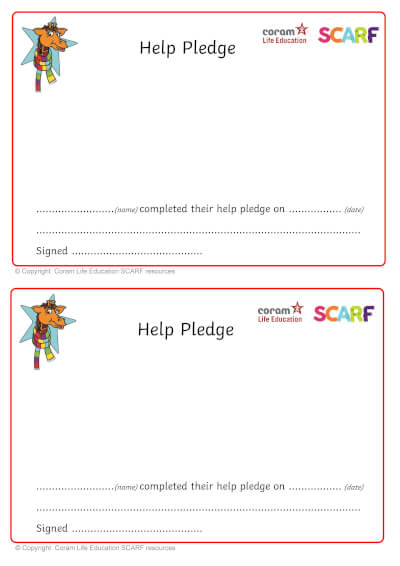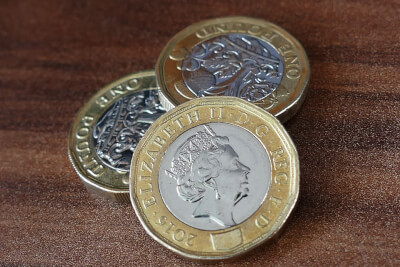What your child will be learning about…
- Starting to understand money and that different notes and coins have different monetary value
- Different jobs around the home and how they can help
- Skills for making a simple snack
- Helping take care of the environment
What you can talk about together…
- Why do we need money?
- Where does money come from?
- How many different jobs can you think of that need to be done in this room?
- Who does different jobs around the home?
- Why do they do those jobs?
- How can you help?
- How do you think you’ll feel when you have helped?
- What do birds eat?
- Why is it harder for them to find food in winter?
What you can do together…
Activity 1 - Getting to know money
On a mat or tray, place different items all relating to money. These can include: coins, notes, debit/credit cards, till, price tags/labels, receipts, purses/wallets, piggy bank.
- Can you tell me anything about these things?
- What have you heard about money?
- Where do we use money?
- What does it look like?
Follow this with a discussion about money. Prompts you could ask are:
- What do we do with money?
- Why do we need money?
Look closer at the coins and notes. See whether the children recognise any of the coins.
Ask:
- Can you find the numbers hiding on the coins?
- Can they tell those which are worth more than others?
Work together, encouraging your child to take the lead to order the coins from the lowest value to the highest. It might help to draw a number line for your child to refer to.
Extra ideas
Set up or create a role play shop/stall. Make the children a part of ‘opening up’ and organising the shop. They can make signs and price labels. The actual price of items doesn’t need to be accurate but it could provide an opportunity to discuss which items are more expensive than others and to have the price labels reflect this.
Give your child a purse/wallet of money (you can use play money or make your own) to use when they’re in the shop so they have to consider how much money they have when they choose what they want to buy. Some children may need support in selecting the correct coins.
When playing in the shop, encourage the children to compare how much things cost.
Ask questions such as:
- Why do they cost more?
- What can you buy lots of?
Playing ‘shop’ is also a great way to model and discuss manners and the importance of saying, ‘please’ and ‘thank you’.
Encourage your child to play independently, using soft toys as customers.
Read The Great Pet Sale by Mick Inkpen - there are several video versions available online.
This book is a great way to encourage counting out the coins as each price is mentioned. (You’ll need a pile of pennies.)
Activity 2 - Helping around the home
This activity is designed to help your child to understand that there are jobs that they can help with around the home and to motivate them to help.This can be a frustrating issue for many parents and lockdown may have highlighted the issue even more. The activity will work best when you are feeling as calm as possible. If now is not the right time, perhaps choose one of the other activities and come back to this one another time.
Ask your child to make a list of some of the jobs that are done at home. Can you list 10? Even more? Have a chat about who usually does each job. You could write names next to the jobs.
Does the list look fair? Are the jobs shared out?
Which jobs help everyone in the home and which are to help an individual?
Have a chat about those jobs that are for the benefit of everyone and those that benefit just one person (like making their bed). Who should do that job if they are able to?
Highlight or draw a line under any jobs that your child could safely help with.
Here's a list of ‘Age appropriate chores’, created by child development experts from NHS Tayside:
Ages 2-3
• Put toys in a toy box • Stack books on a shelf • Place dirty clothes in laundry basket • Throw rubbish away • Set the table • Fetch nappies and wipes • Dust
Ages 4-5
• Feed pets • Wipe up spills • Put away toys • Make the bed • Tidy bedroom • Water indoor plants • Prepare simple snacks • Use hand-held vacuum • Clear kitchen table • Dry and put away dishes
The idea is that this will give you some guidance as to what a child might be capable of at a given age. If your child is not used to doing any jobs or has got out of the habit, then it will be helpful to take small steps, adding one or two jobs at a time and a change in habits will take time to consolidate. Praise is a huge motivator and can take the form of verbal or non-verbal cues, such as smiles or thumbs-up and sticker or tick charts.
You can print one of our ‘Help pledges’ or make your own and encourage your child to decorate their pledge, which can be put on display to motivate your child.

Activity 3 - Making a healthy snack
Involving your child in making snacks and meals can help build their self-esteem and also encourage healthy eating. Children, especially when they are young, enjoy feeling that they have ‘jobs’ to do. Try to praise for the effort even if the task isn’t completed perfectly. That way they’ll be more likely to try again.
This recipe for the Indian snack, raita, is easy to make. It's healthy, with calcium and vitamins from yoghurt and the cucumber (non-dairy yogurt can be used as an alternative). It can be eaten with curry and rice or simply as a dip for bread-sticks, pitta fingers or carrot sticks.
Remember to encourage your child to help tidy up after making and eating the Raita.
Harold the giraffe has an easy recipe! Making a Raita - recipe.
Activity 4 - Looking after the birds
Making a bird feeder is a really lovely activity to do with your child as there is lots of mixing and stirring. When the feeder is hanging outside, your child can spot the birds that come to feed. You could look up the different types of birds. It’s a great feeling, knowing that you’re helping wildlife at this tricky time of year for them.
You'll find an easy recipe at Harold the giraffe's Daily Diary.SCARF values I thought about...
Which of the SCARF values did the activities include?
You can point to these, or if you're making a SCARF journal you can write them down and tick those you did. There's no right or wrong answer! It's up to you to decide!
Safety
Caring
Achievement
Resilience
Friendship
About SCARF at Home activities
Information for parents and carers before you start using the SCARF at Home activities
Your child's school is sharing some activities with you to help keep children happy and healthy while they're at home. The activities support children's PSHE (Personal, Social, Health and Economic) education and have been provided by the UK's largest children's charity specialising in children's health and wellbeing, Coram Life Education and SCARF.
Coram Life Education and SCARF help schools to teach children valuable life skills needed to keep them happy, healthy and safe.


